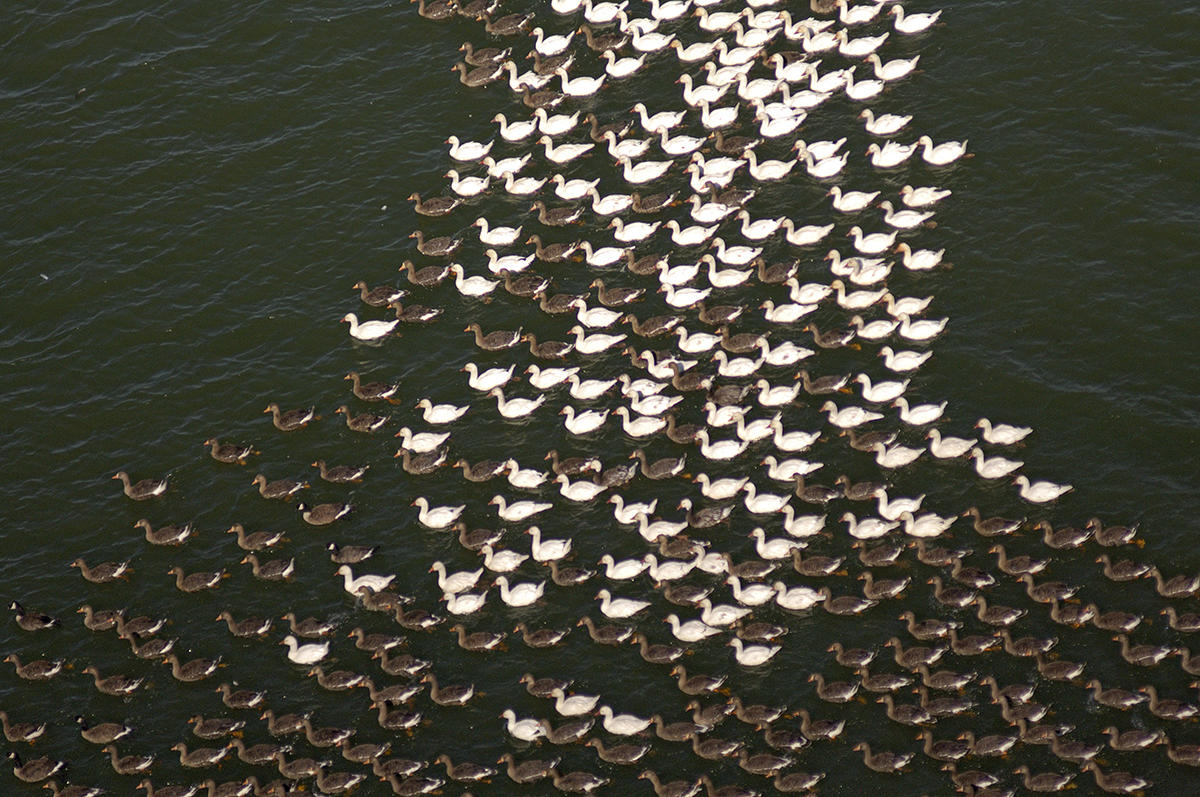
ANCHORAGE, AK (November 20, 2018): The current land management plan operating in the National Petroleum Reserve-Alaska (NPR-A) is a gold standard for balance between conservation and development in the Western Arctic of Alaska. Yet the Trump administration announced today plans to disturb that balance by launching the redo of the NPR-A plan (known as the Integrated Activity Plan, or IAP).
“Despite its industrial name, wildlife abound in the NPR-A,” said Susan Culliney, Policy Director of Audubon Alaska. “The current plan allows for development in some areas, while also protecting ecological hotspots like Teshekpuk Lake. We have significant data that shows how important this area is for molting geese, half a million shorebirds, all four species of eider, tens of thousands of caribou, and denning polar bears. Any new plan must protect this vital wildlife habitat.”
The current plan—finalized in 2013—was the result of a comprehensive multi-year process. That process included extensive consideration of many perspectives and an analysis of the best available science. The existing plan also abides by the 1976 statute governing the NPR-A, which requires that any petroleum development “assures the maximum protection” of surface values such as “subsistence, recreational, fish and wildlife, or historical or scenic value.” Ecologically vital areas like the Teshekpuk Lake wetlands complex is placed off-limits to development, while development in other parts of the NPR-A is allowed.
Recent statements from Department of Interior officials indicate the Trump administration wants to use the new planning process to roll back protections for sensitive areas in the NPR-A that are currently off-limits to oil and gas leasing. This includes Teshekpuk Lake.
“There are only a handful of places in all of North America that are as important for birds and wildlife as Teshekpuk Lake and the surrounding wetlands,” said Sarah Greenberger, Senior VP of Conservation Policy for National Audubon Society. “Opening up this special place to more oil and gas drilling is short-sighted and contrary to the collaborative approach that resulted in the existing plan that balances conservation and responsible development.”
By unnecessarily redoing the NPR-A Plan, the Department of the Interior is putting the Teshekpuk Lake area at serious risk of development. Audubon plans to participate in the IAP process every step of the way.
“We will contribute the best available science, which will yet again demonstrate that the wildlife habitat at Teshekpuk Lake is just too special to drill,” Culliney said. “Some places, regardless of oil potential, must be maintained for wildlife. Recognizing this proper balance is our shared responsibility for generations to come.”
Links
About Audubon
The National Audubon Society protects birds and the places they need, today and tomorrow, throughout the Americas using science, advocacy, education and on-the-ground conservation. Audubon's state programs, nature centers, chapters and partners have an unparalleled wingspan that reaches millions of people each year to inform, inspire and unite diverse communities in conservation action. Since 1905, Audubon's vision has been a world in which people and wildlife thrive. Audubon is a nonprofit conservation organization. Learn more how to help at www.audubon.org and follow us on Twitter and Instagram at @audubonsociety.
Since 1977, Audubon Alaska's mission is to conserve the spectacular natural ecosystems of the state, focusing on birds, other wildlife, and their habitats, for the benefit and enjoyment of current and future generations. Audubon Alaska uses science to identify conservation priorities and support conservation actions and policies, with an emphasis on public lands and waters. Audubon Alaska is a state office of the National Audubon Society. Learn more at www.AudubonAlaska.org.
###
Media Contacts
Susan Culliney, Policy Director, Audubon Alaska sculliney@audubon.org, 907.276.7034
Rebecca Sentner, Communications Manager, Audubon Alaska rsentner@audubon.org, 907.276.7034
Nick Gonzales, Media Relations Manager, National Audubon Society, ngonzales@audubon.org, 212.979.3068



